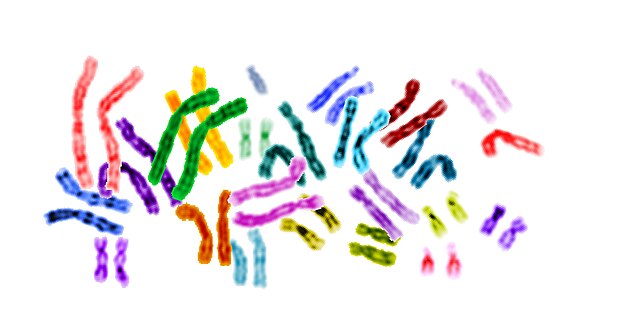Virtual karyotype is the digital information reflecting a karyotype, resulting from the analysis of short sequences of DNA from specific loci all over the genome, which are isolated and enumerated. It detects genomic copy number variations at a higher resolution for level than conventional karyotyping or chromosome-based comparative genomic hybridization (CGH). The main methods used for creating virtual karyotypes are array-comparative genomic hybridization and SNP arrays.
Fig 2. Virtual karyotype of a chronic lymphocytic leukemia sample using a SNP array.
Fig 3. Virtual karyotype log2ratio plot of a chronic lymphocytic leukemia sample using a SNP array. Yellow = copy number of 2 (normal/diploid), aqua = 1 (deletion), pink = 3 (trisomy).
Fig 5. Her2 Amplification by SNP array virtual karyotype.
Fig 6. Copy neutral LOH/uniparental disomy
A karyotype is the general appearance of the complete set of chromosomes in the cells of a species or in an individual organism, mainly including their sizes, numbers, and shapes. Karyotyping is the process by which a karyotype is discerned by determining the chromosome complement of an individual, including the number of chromosomes and any abnormalities.
Micrograph of human chromosomes before further processing. Staining with Giemsa confers a purple color to chromosomes, but micrographs are often converted to grayscale to facilitate data presentation and make comparisons of results from different laboratories.
Spectral human karyotype






